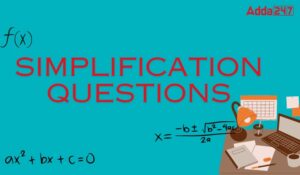Q1. Two trains A and B moves towards each other at the same time from different stations P and Q respectively. After meeting each other, the train A takes 2 hour 24 minutes to reach Q and the train B takes 4 hours 16 min to reach the station P. If the speed of the train B is 60 km/h then find the speed of the train A?
(a) 80 km/h
(b) 60 km/h
(c) 70 km/h
(d) 90 km/h
(e) 85 km/h
Q2. Three pipes A, B and C need a certain time to fill a certain cistern. Working together, they require 30 minutes to fill 50% of the cistern. C needs 1 hours less than A to fill the cistern. The cistern gets filled if A and B start working together and A stops after 1 hour and B works for further 3 hours. How much filling C do per hour?
(a) 1/6
(b) 1/3
(c) 1/2
(d) 2/3
(e) 1/4
Q3. A and B undertook a work for Rs 350. A got Rs 150 more than that of B, when they worked together. B takes 9 days more than A, when they work individually. In how many days A and B working together can do the whole work?
Q4. There are 12 filling pipes each capable of filling a cistern alone in 32 minutes and 8 emptying pipes each capable of emptying A cistern alone in 40 minutes. All pipes are opened together and as a result, tank was filled with 28 litres of water per minute. Find the capacity of the tank.
(a) 160 litres
(b) 120 litres
(c) 100 litres
(d) 80 litres
(e) 180 litres
Q5. Out of 10,000 seats in a stadium 100 were not sold. Of the tickets sold, 20% were sold at half price and the remaining tickets were sold at the full price of Rs 20. The total revenue from the ticket sales, in Rs was:
(a) 1,58,400
(b) 1,78,200
(c) 1,80,000
(d) 1,98,000
(e) 1,87,200
Direction (Q6 – Q10): What approximate value should come in place of question mark (?) in the following questions?
(Note: You are not expected to calculate the exact value)
Q6. 12.994 × 22.009 × 17.982 = ?
(a) 5,100
(b) 5,200
(c) 5,148
(d) 5,199
(e) 5,348
Q7. 18% of 602 + 27.8% of 450 = ?
(a) 234
(b) 260
(c) 225
(d) 220
(e) 250
Q9. 3194 ÷ 7.85 + 74.85% of 798 = ?
(a) 1050
(b) 975
(c) 950
(d) 1000
(e) 1100
Directions (11-15): The following pie chart and table show the percentage distribution of ‘D’ grade employee and percentage of employees who have higher education in them respectively in five different departments of central government. Study the graphs carefully and answer the questions that follow:
Q11. What is the difference between number of employees in Home Ministry and MHRD who do not have higher education?
(a) 701
(b) 710
(c) 712
(d) 720
(e) 705
Q12. What is the ratio of number of employees in Defence Ministry who have higher education to the number of employees in MHRD who do not have higher education?
(a) 5 : 11
(b) 15 : 7
(c) 7 : 15
(d) 11 : 5
(e) 7 : 13
Q13. Find the average number of employees in Home Ministry, MHRD and Social welfare together who have higher education.
(a) 16,660
(b) 14,066
(c) 16,460
(d) 16,046
(e) 15,046
Q14. Number of employees in Home Ministry who do not have higher education is approximately what percent more or less than the number of employees in Defence Ministry who have higher education ?
(a) 118%
(b) 108%
(c) 114%
(d) 120%
(e) 124%
Q15. If 25% employees who have higher education in Defence Ministry, MHRD and Irrigation Department together got promoted, then find the total number of employees who got promoted in these departments together.
(a) 9,055
(b) 9,575
(c) 9,755
(d) 10,508
(e) 10,050
Check Detailed Solutions for these Questions
- Quantitative Questions for upcoming Banking and Insurance Examinations
- Study Notes of Quantitative Aptitude
- Practice More Data Interpretation Questions
- Quantitative Aptitude Section Strategy





 Simplification Questions For Bank Exams ...
Simplification Questions For Bank Exams ...
 Quantity Comparison Questions for Bank E...
Quantity Comparison Questions for Bank E...
 Mixture & Alligation Questions for B...
Mixture & Alligation Questions for B...




